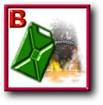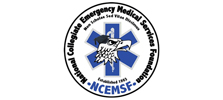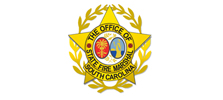Fire Classifications
Fire Classifications |
Fire Extinguishing |
|
|
How to extinguish a Class A Fire: Extinguish ordinary combustibles by cooling the material below its ignition temperature and soaking the fibers to prevent re-ignition. Use pressurized water, foam or multi-purpose (ABC rated) dry chemical extinguisher. DO NOT USE carbon dioxide or ordinary (BC-rated) dry chemical extinguisher on Class A fires. |
|
|
How to extinguish a Class B Fire: Extinguish flammable liquids, greases by removing the oxygen, preventing the vapors from reaching the ignition source or inhibiting the chemical chain reaction. Foam, carbon dioxide, ordinary (BC-rated) dry chemical, and multi-purpose dry chemical, may be used to fight Class B fires. |
|
|
How to extinguish a Class C Fire: Extinguish energized electrical equipment by using an extinguishing agent that is not capable of conducting electrical current. Carbon dioxide, ordinary (BC-rated) dry chemical and multi-purpose dry chemical may be used to fight Class C fires. DO NOT USE WATER EXTINGUISHERS ON ENERGIZED ELECTRICAL EQUIPMENT. |
|
|
How to extinguish a Class D Fire: Extinguish combustible metals such as magnesium, titanium, potassium and sodium with dry powder extinguishing agents specially designated for the material involved. In most cases, they absorb the heat from the material, cooling it below its ignition temperature. |












